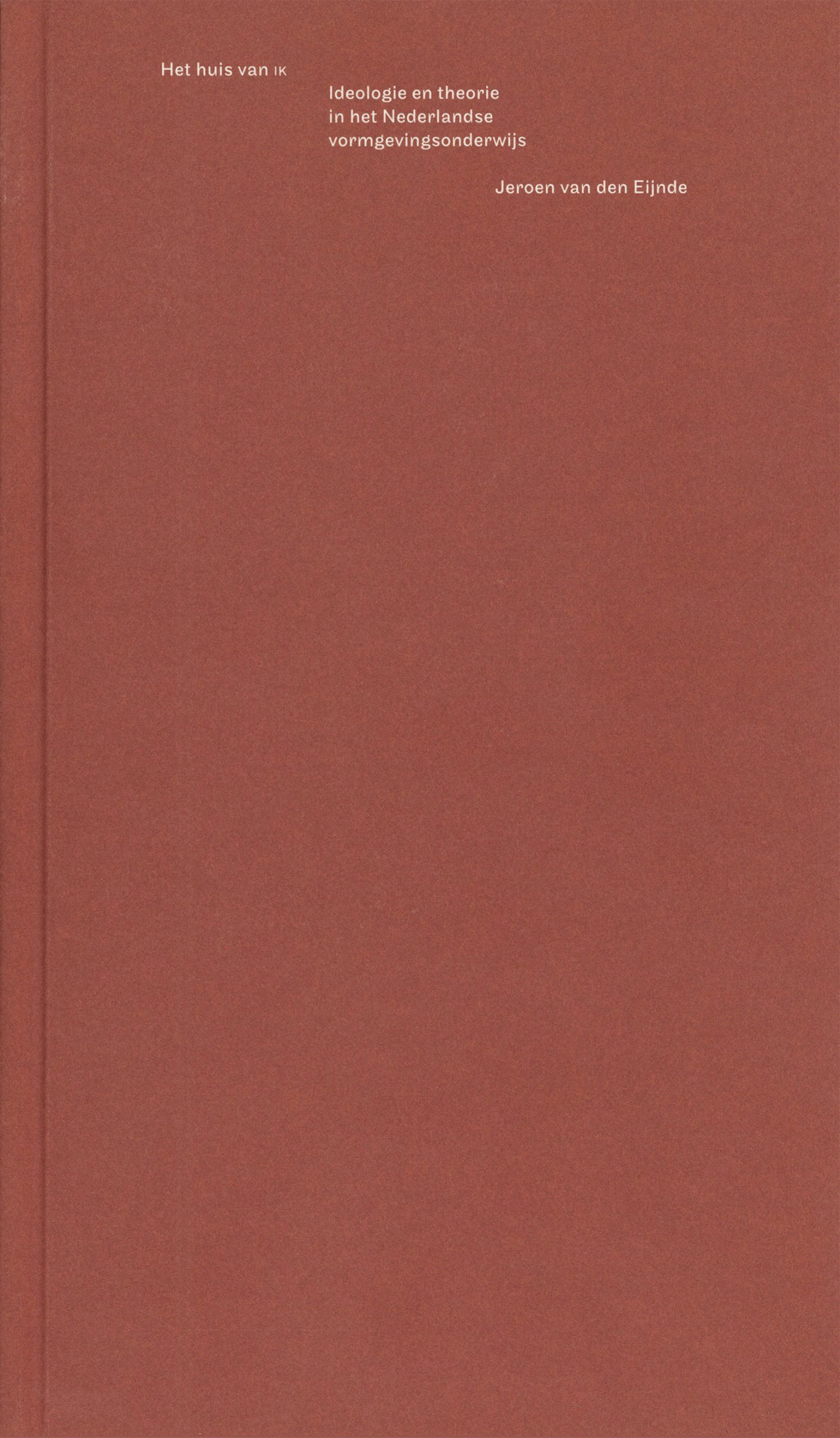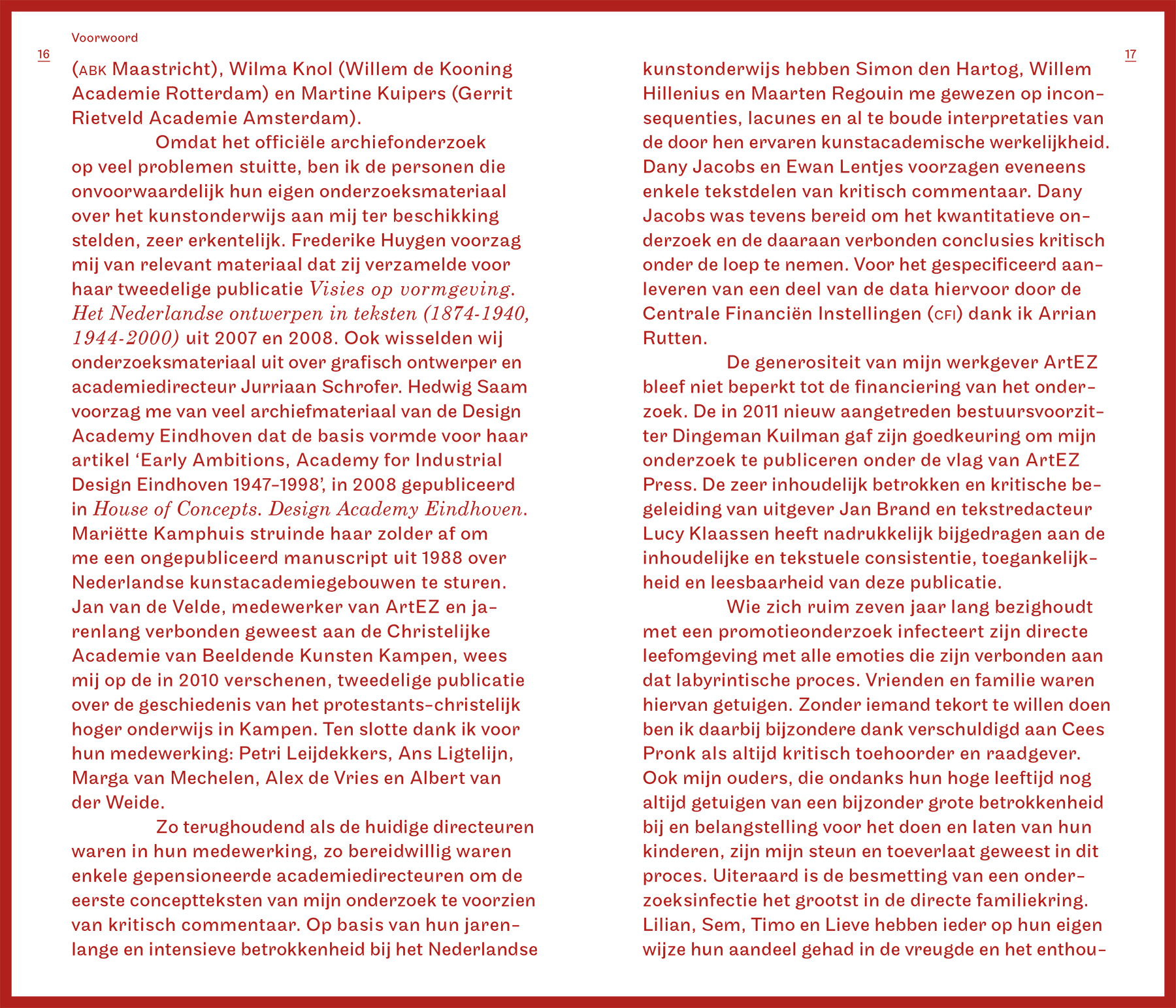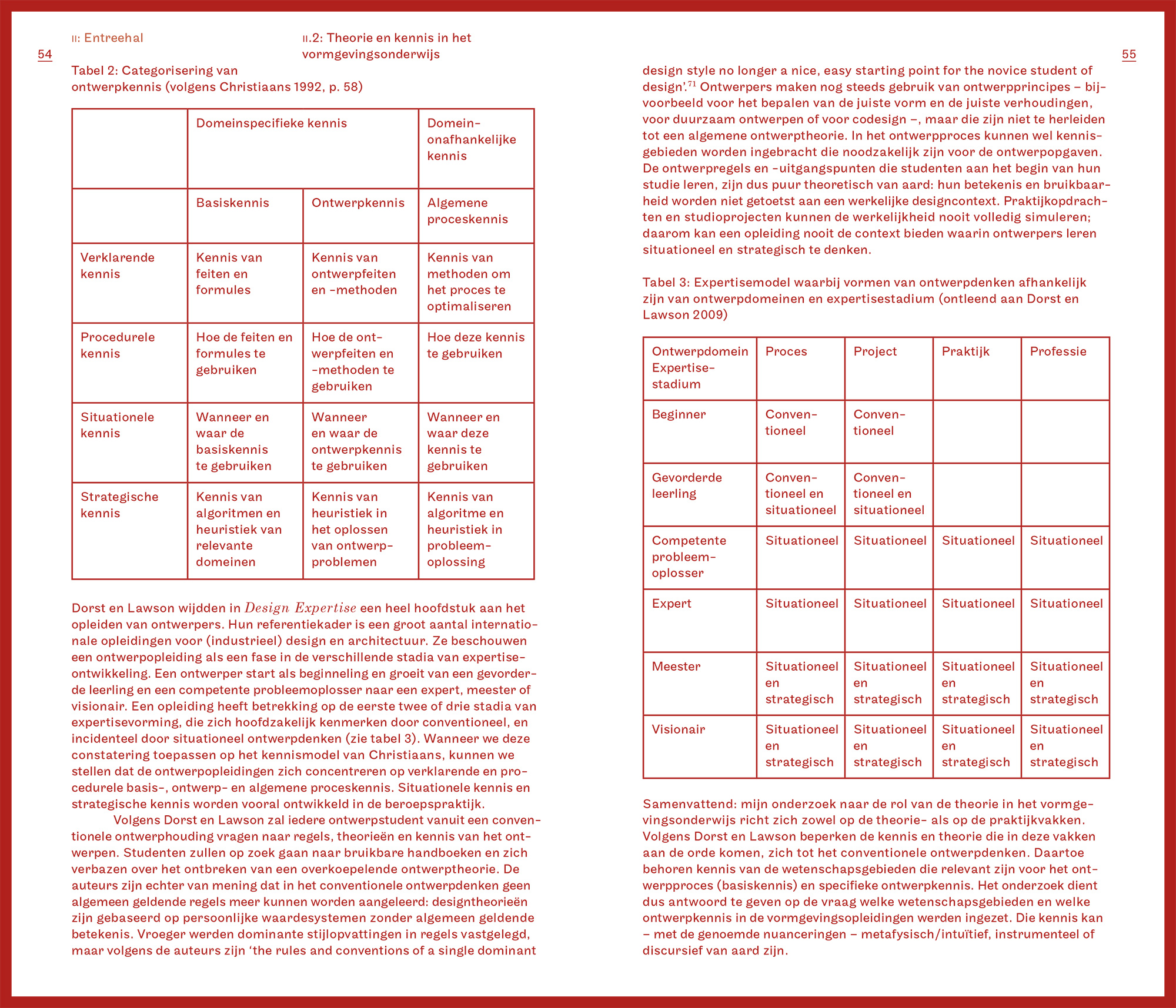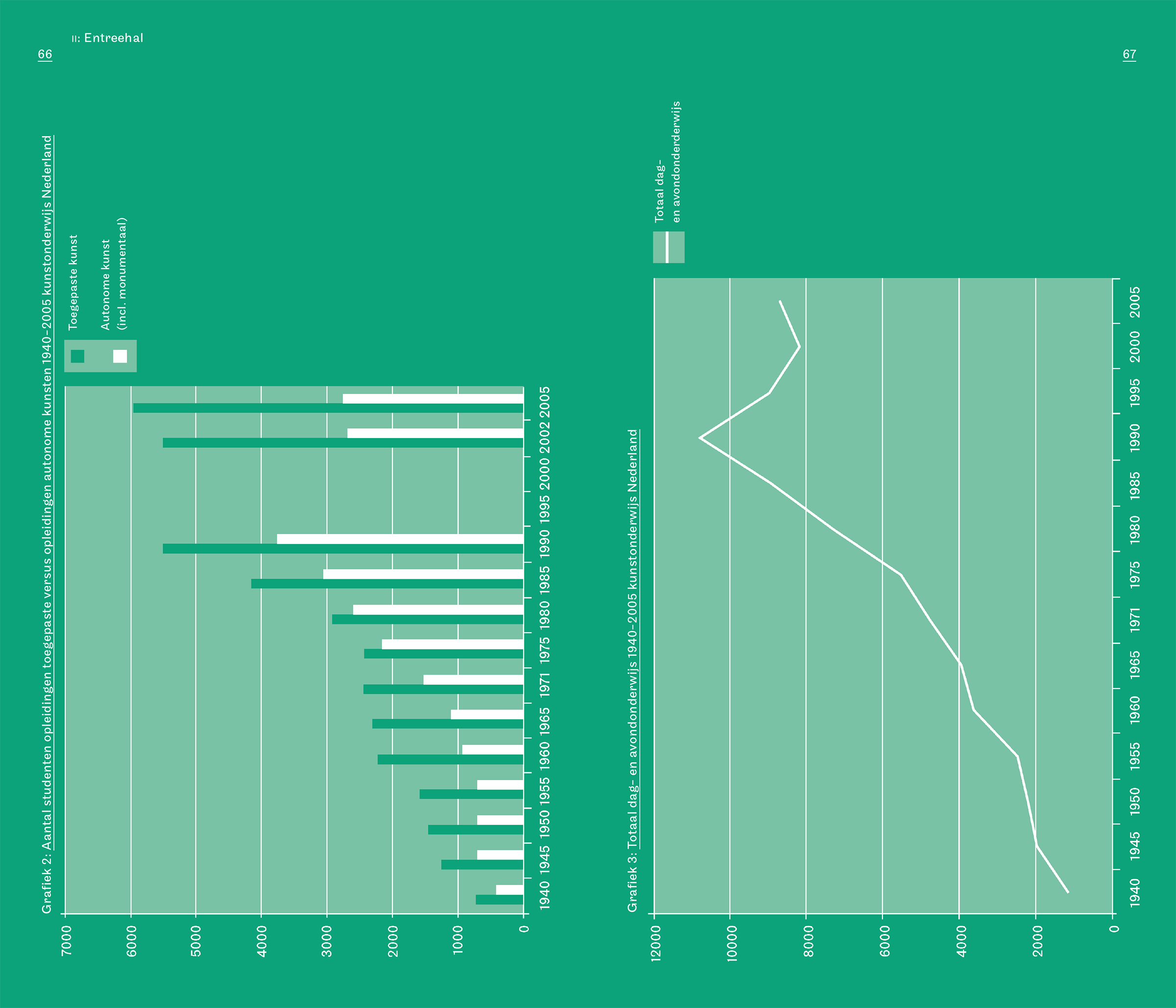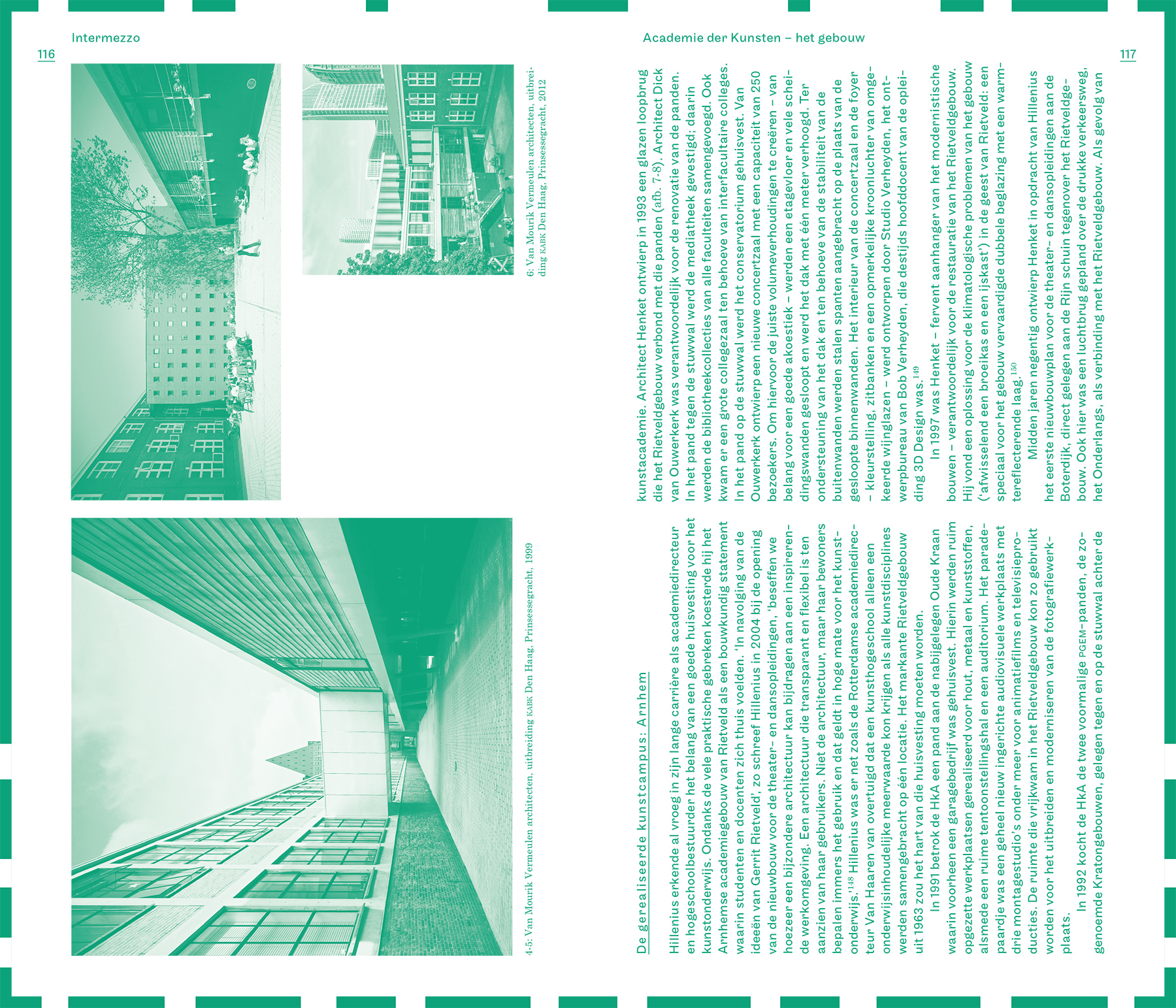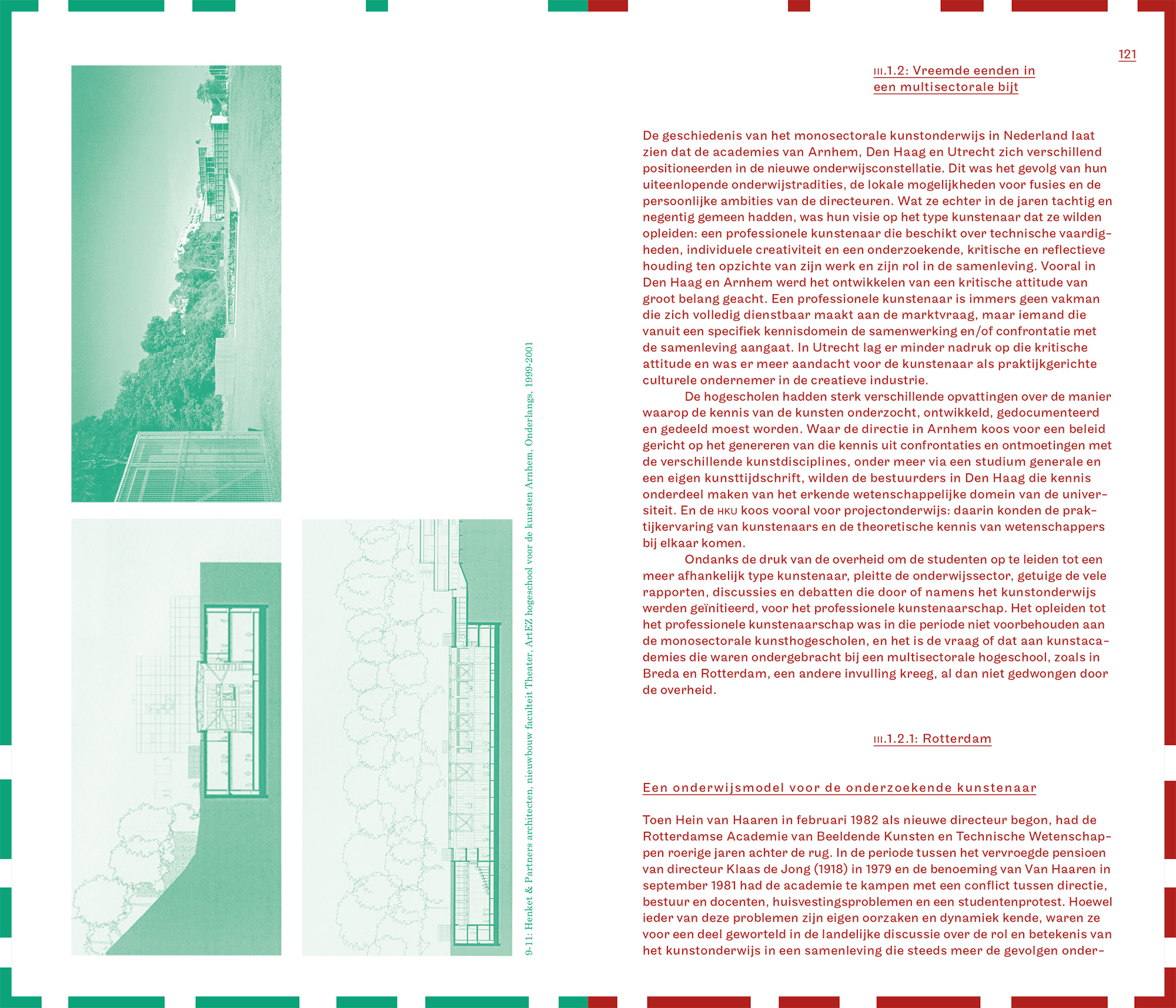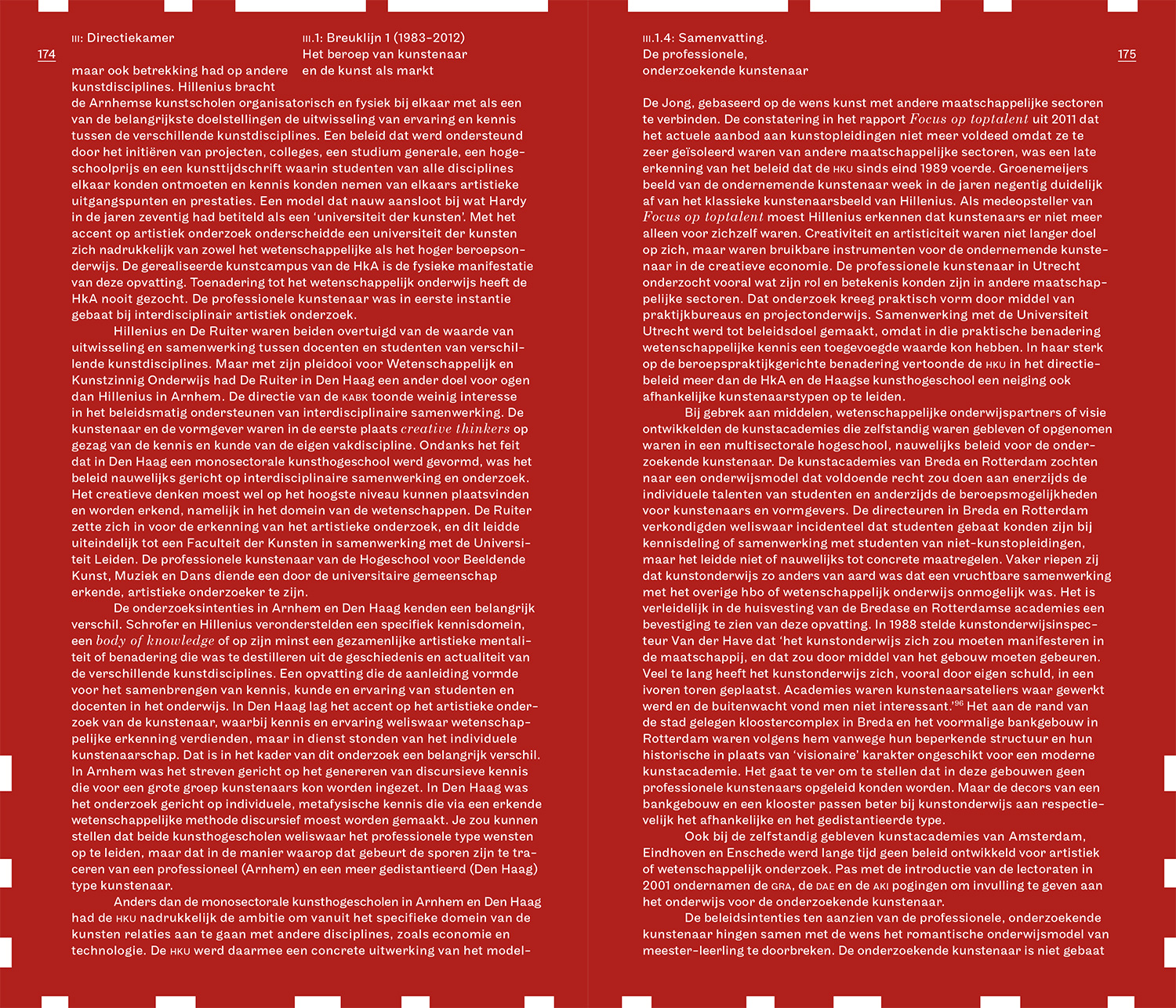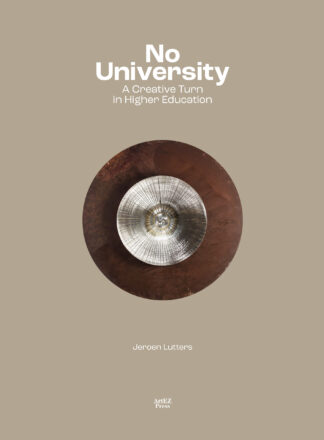Het huis van IK
Het huis van IK is a broad, explorative piece of research into the meaning of ‘theory’ within Dutch design education between 1921 (Law of Applied Arts Education) until 2012. The book focuses on training programmes for graphic design (i.e. advertising, typography), product development (i.e. metalsmithing, product design, industrial design) and fashion (textile and fashion design). Dutch art academies that have specialized in training professional artists since the development of applied arts education have applied and/or developed forms of theory that are still relevant for current and future design education. The book deals with the following questions: what kinds of artist were educated where (through which academy/programme) and when (between 1921 and 2012)? Which forms of knowledge and theory were used or developed at the academies/design programmes studied? Which forms of knowledge and theory are still relevant for modern design education? Using existing statistics about art education it is shown that Dutch art education is mainly design education, where the majority consists of graphic design programmes. This book contributes to the current discussion about the role art schools fulfil as institutes of knowledge. It offers insight into the specific knowledge domain designers are trained in within art education.
